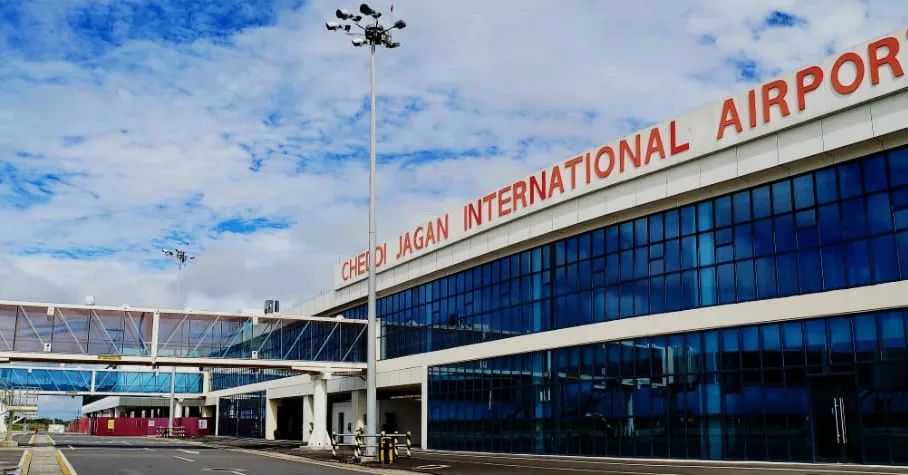
A glance at the various lists for the world’s best airports confirms that airports are increasingly seen as a sign of a country’s ambitions, a catalyst for further growth, and a way for a country to present itself to the outside world. For Guyana, the world’s fastest-growing economy, the airport that fits this mold is Cheddi Jagan International Airport (CJIA) in its capital city, Georgetown.
With one of the world’s largest oil per capita ratios, Guyana is set to join a list of small countries which have been transformed by commodities. Most made an airport a central tenet of their country’s investments. All indications are that CJIA is set to follow a similar trajectory. Business Excellence decided to take a closer look at an airport for which the skies aren’t even the limit.
Increases Across the Board
A recent US$115 million loan from the Inter-American Development Bank to Guyana to improve the country’s transportation networks - a massive loan for a country of less than 1 million people - is an ample indication of the confidence being placed in the country’s prospects. But it’s also clearly being made based on the rapidly growing numbers at CJIA.
When compared to 2020, passengers passing through CJIA have doubled. And this is despite the lingering effects of Covid on international air transport. And when compared to 2019 - the last full pre-pandemic year in Guyana - CJIA is running at close to par, perhaps even tipping into a record year for passenger traffic in 2022.
In 2021, a total of 359,350 foreign passengers passed through the airport, compared to 182,736 in 2020. These numbers are set to increase further with the addition of the world’s largest airlines acquiring berths at CJIA. In the first quarter of 2023, this will include British Airways, which will pass through CJIA twice a week, on flights with a capacity for 332 passengers.
Before that can even happen, however, CJIA will have to deal with ever-increasing visitor numbers. September 2022 saw record 30,010 international passengers come through the airport’s gates, albeit influenced by a cricket festival being held in Georgetown, but further proof that numbers at CJIA are all trending in the right direction.
Expansion Project
The numbers couldn’t keep rising without suitable adjustments to the airport’s infrastructure. Just over a decade ago, an ambitious expansion plan was mooted for CJIA, which is now at the final stages of completion. Works began in 2018 and the total cost of the development will run close to US$150 million.
The works took in construction on the existing terminal building as well as a new arrivals terminal building, a remove apron, an extension of the north east and south east runways, diesel generator room, and fire pump station. It is no exaggeration to say that the modernization of the airport is transformative for Guyana and its tourism ambitions.
One of the most significant developments that occurred during the modernization was the addition of two air bridges, enabling the airport to cater for flights with planes of type D and E (those carrying above 300 passengers). This was the spur that attracted the interest of carriers like Jet Blue and British Airways. Increased scale also promises cheaper flights.
The new departure area also has seating for 450 people - a considerable statement of intent in itself. Visitors will also be welcomed by the diversity of the airport’s offerings. It now includes everything from coffee shops and places to acquire traditional Guyanese food, to a Lego store and the classic duty-free offering.
Socioeconomic Impact
The extension of CJIA and its importance goes well beyond raising the passenger numbers at the airport as a means in itself. Slightly less than 8% of Guyana’s GDP comes from tourism and the industry employs some 22,000 people. The big takeaway from these numbers is that Guyana’s tourism industry needs to grow and CJIA will be a part of that.
In 2022, the country’s president, Irfaan Ali, said that the government would seek to plough some of the vast royalties received from oil sales into other industries to diversify the economy away from hydrocarbons. The tourism industry should be a big benefactor, and CJIA will be an important conduit for this to happen.
The extension of CJIA and the accommodation for larger international planes has also fed into a desire among large hotel chains to begin operations in the country. Hyatt, Best Western, and Marriott are already preparing high-quality hotel accommodations in Georgetown, which will provide further employment, and boost the technical proficiency of local workers in the tourism industry.
Partners and Suppliers
Further proof of the socioeconomic impact of CJIA can be seen in the local nature of the airport’s partners and suppliers - a diversified mix of Guyana-based companies, and currently just a handful of international players.
Local partners include GUYOIL Aviation Services providing CJIA with the diesel cracks that its planes need to refuel, Timehri Handling Service Inc. for airport baggage handling, Ramps logistics, a fast-growing local player in the hydrocarbon logistics industry, Massy Motors Guyana, Kallco Guyana Inc. for its construction services, and Total Solutions for its elevators.
Of its international partners, CJIA counts on Consolidated Cargo and Aviation Services, the world’s largest airport logistics firm, InterCaribbean Airways, long responsible for bringing the world to Guyana, ATG Airports and NextGen Systems Group for overseeing the extended airport’s complex technology requirements, and China Harbour Engineering Corporation (CHEC) for bringing the extension project to realization.
The Future
With the recent discovery and explosion of Guyana’s oil and gas sector, nobody doubts that Guyana will experience consistent economic growth for decades to come. It has become the new frontier for investments with expectations similar to that of Dubai. To this end, there is a growing traffic of investment and people headed towards Guyana and CJIA will be the landing point for most if not all.
CJIA is still a small airport in international terms but considering the ongoing investments in its expansions as well as plans to liberalize immigration laws in Guyana to meet the demand for future growth, combined with increased tourism, general commercial trade, and the country’s rising profile, mean that it cannot stay small forever. Don’t be surprised to see CJIA sitting atop the world’s best airport lists in the very near future.
DOWNLOAD
 CJIA -BE-2022.pdf
CJIA -BE-2022.pdf












